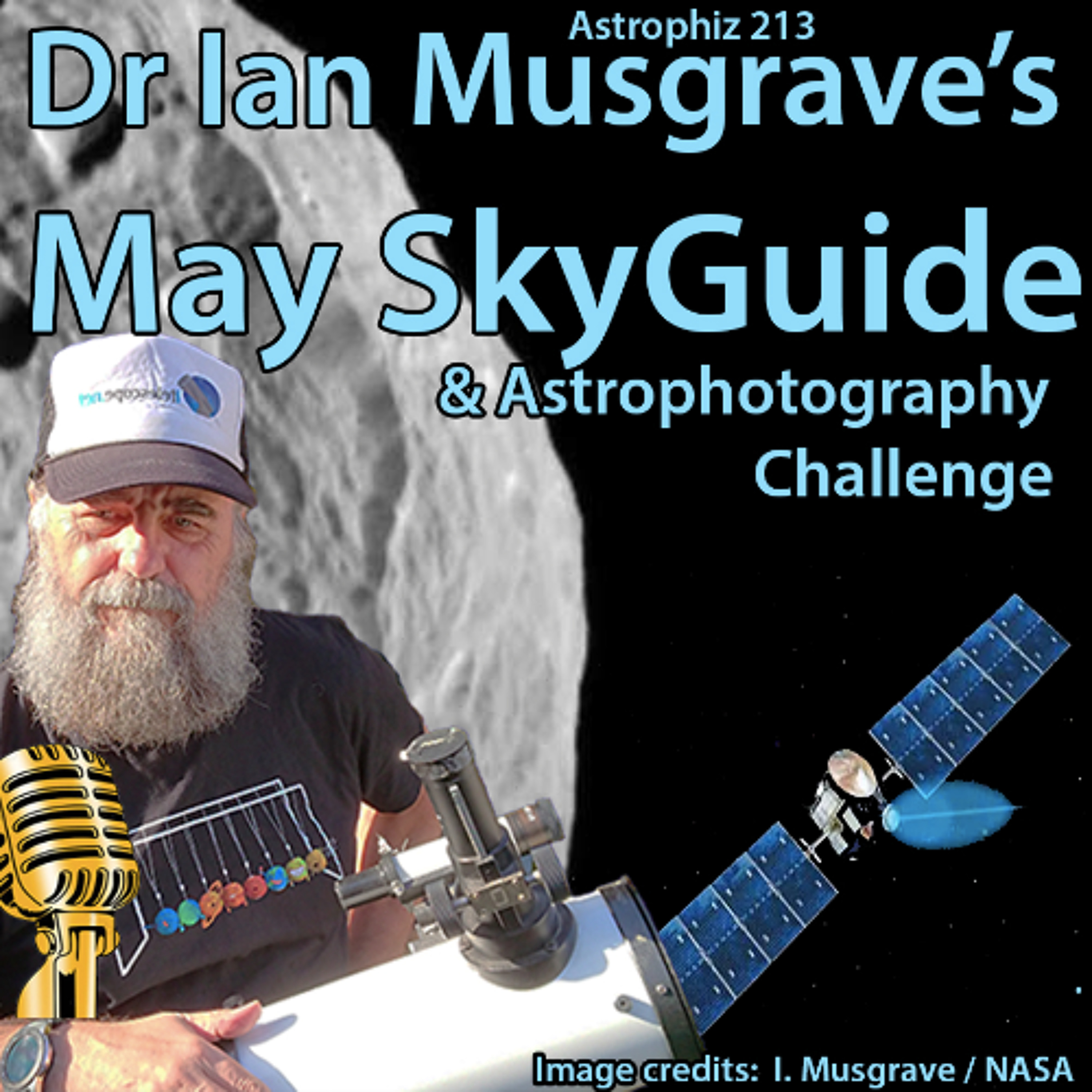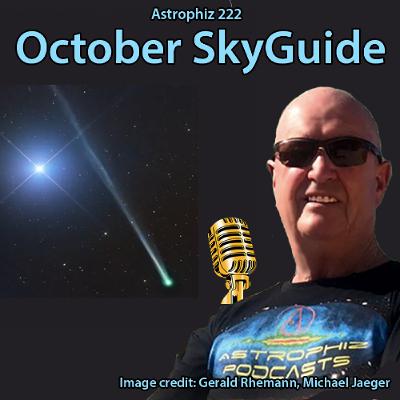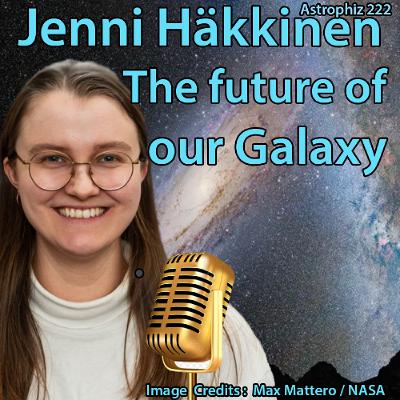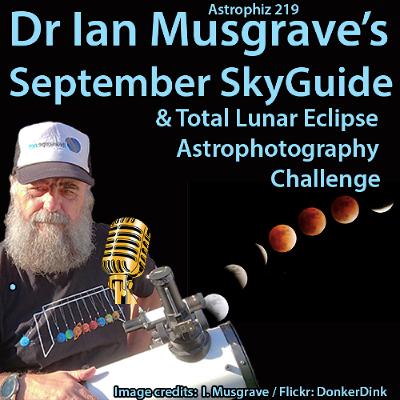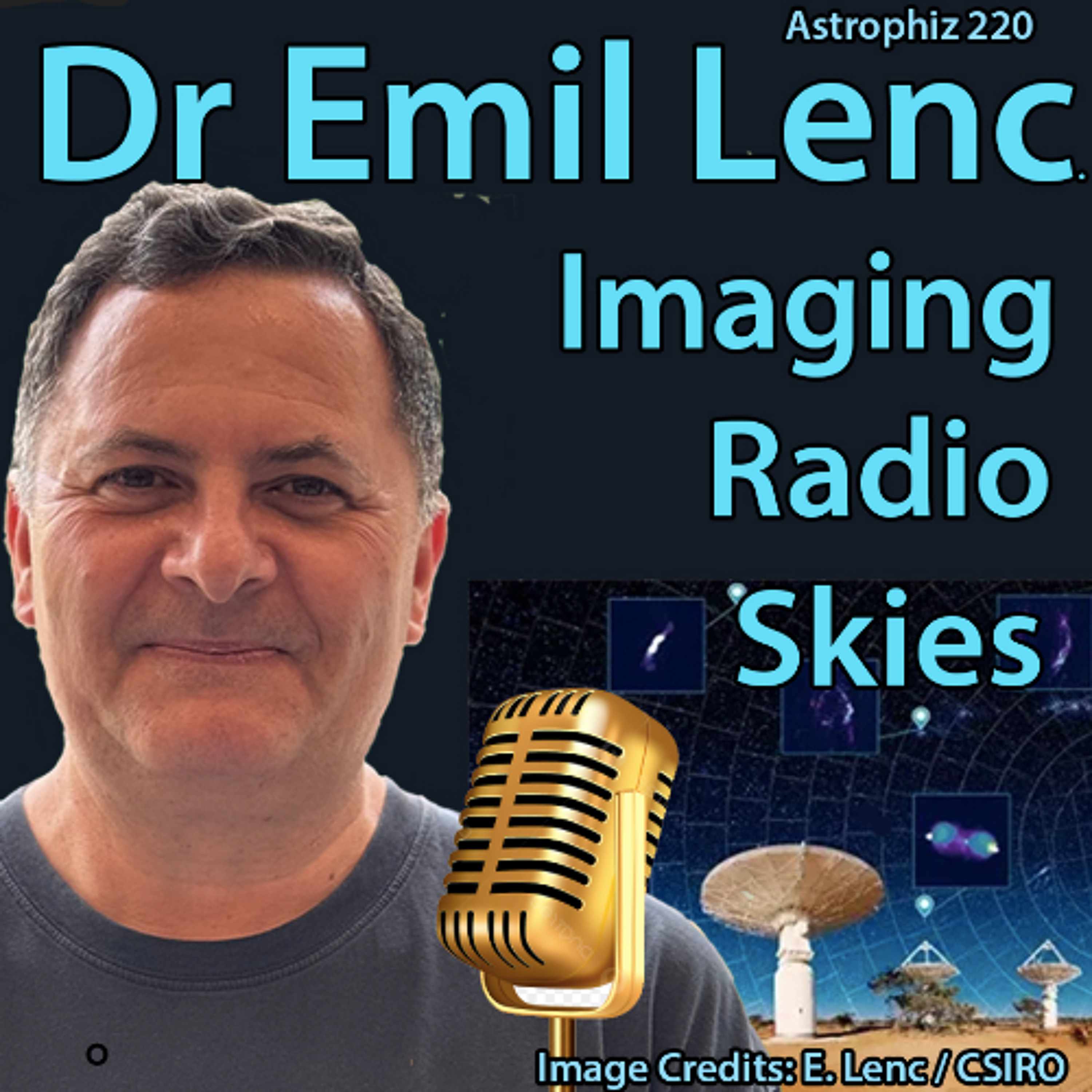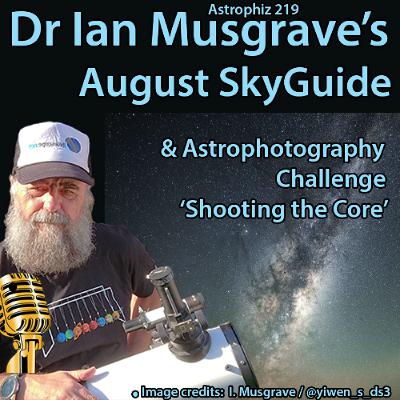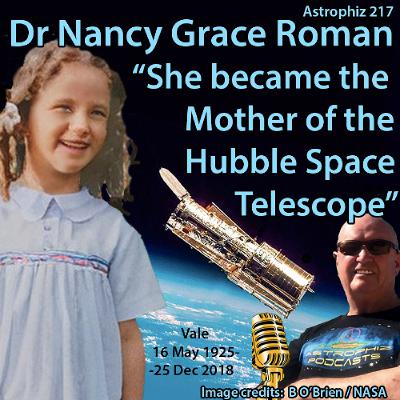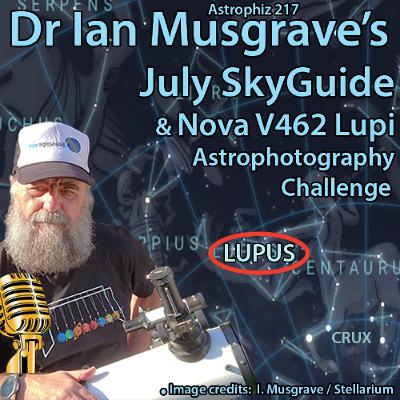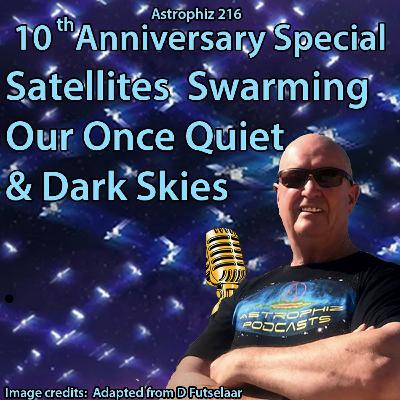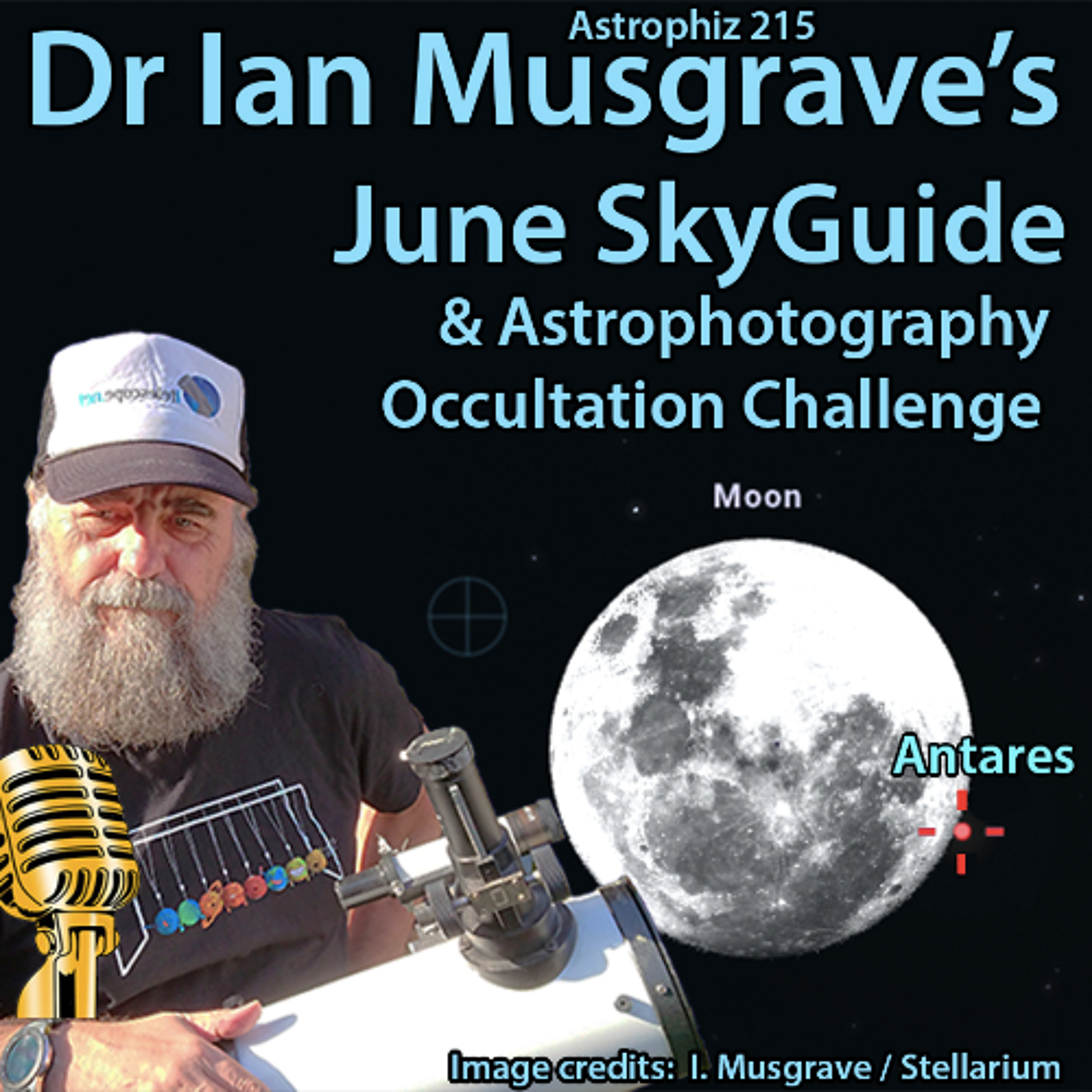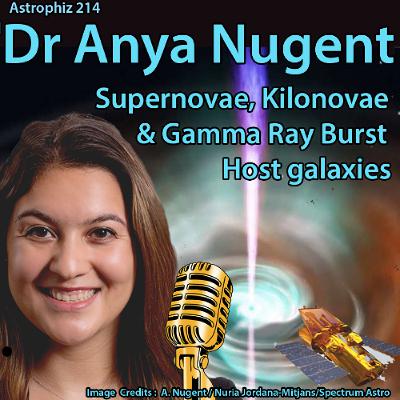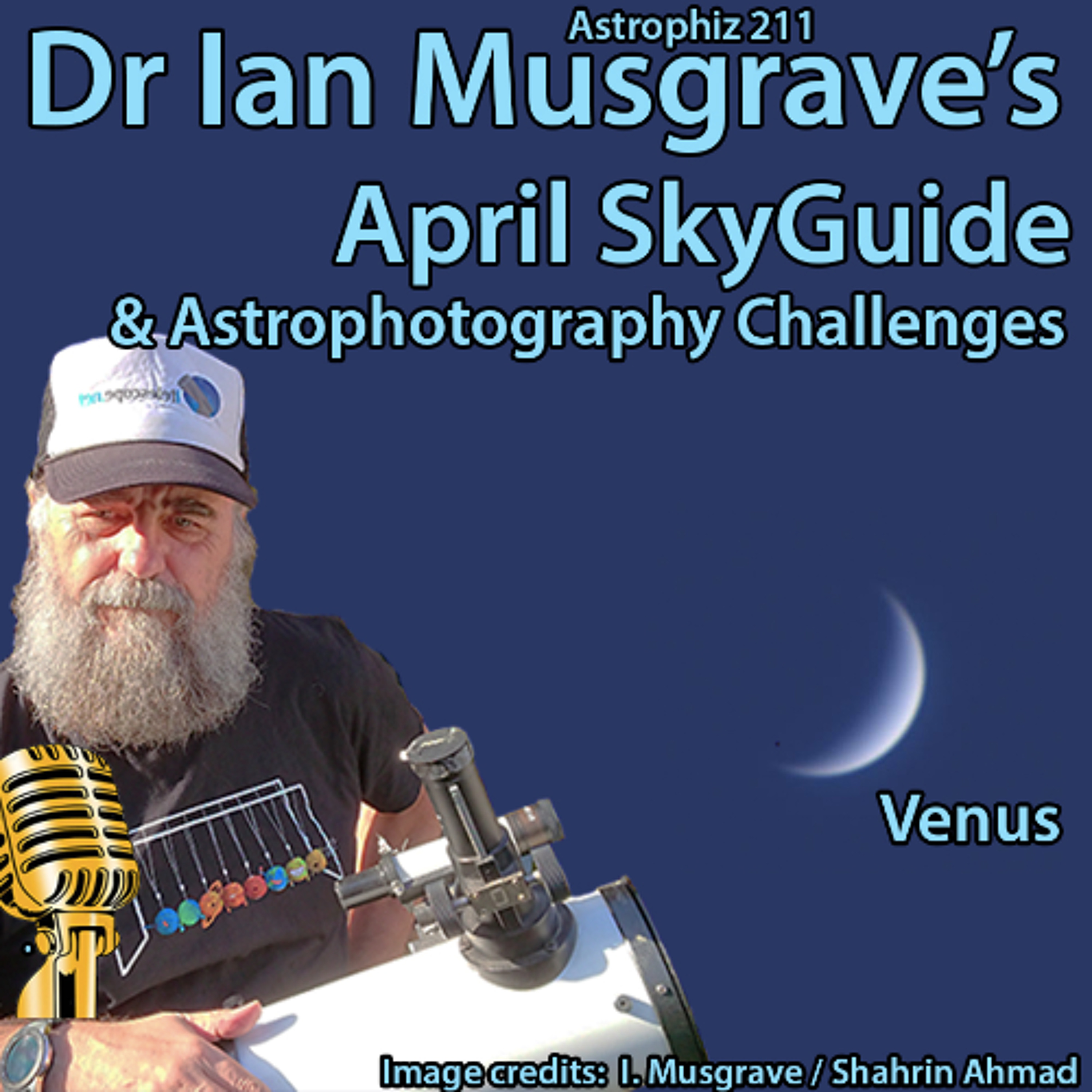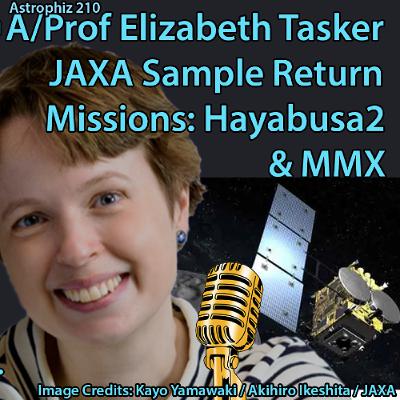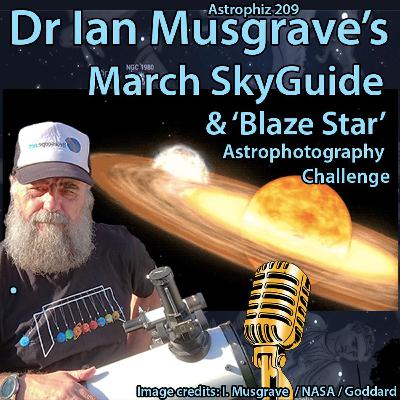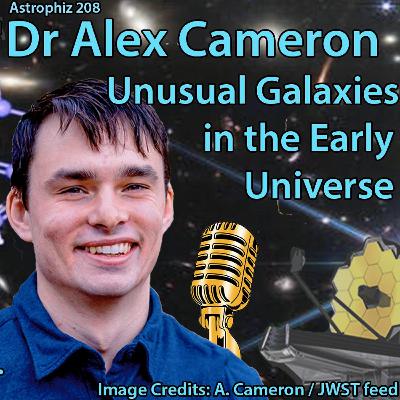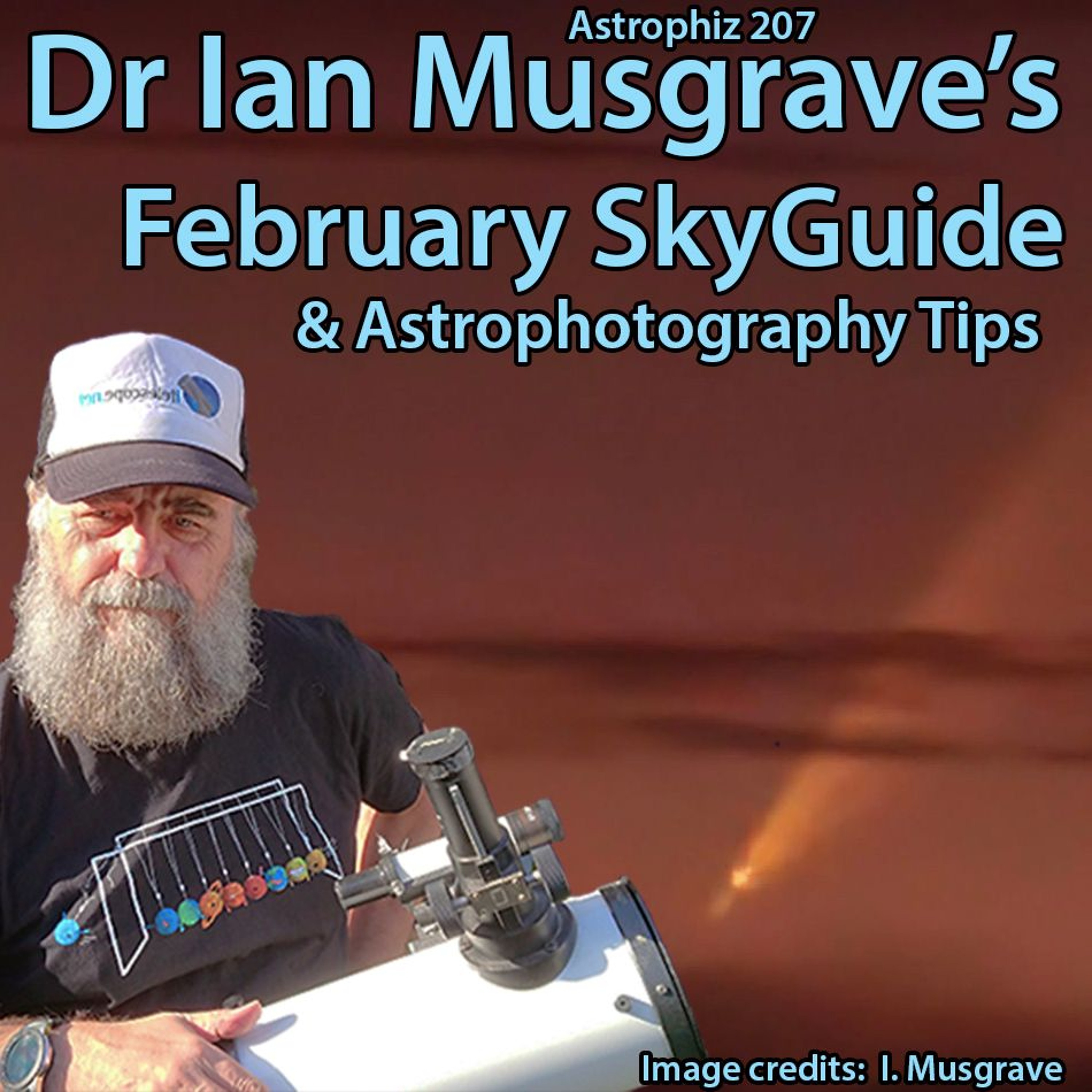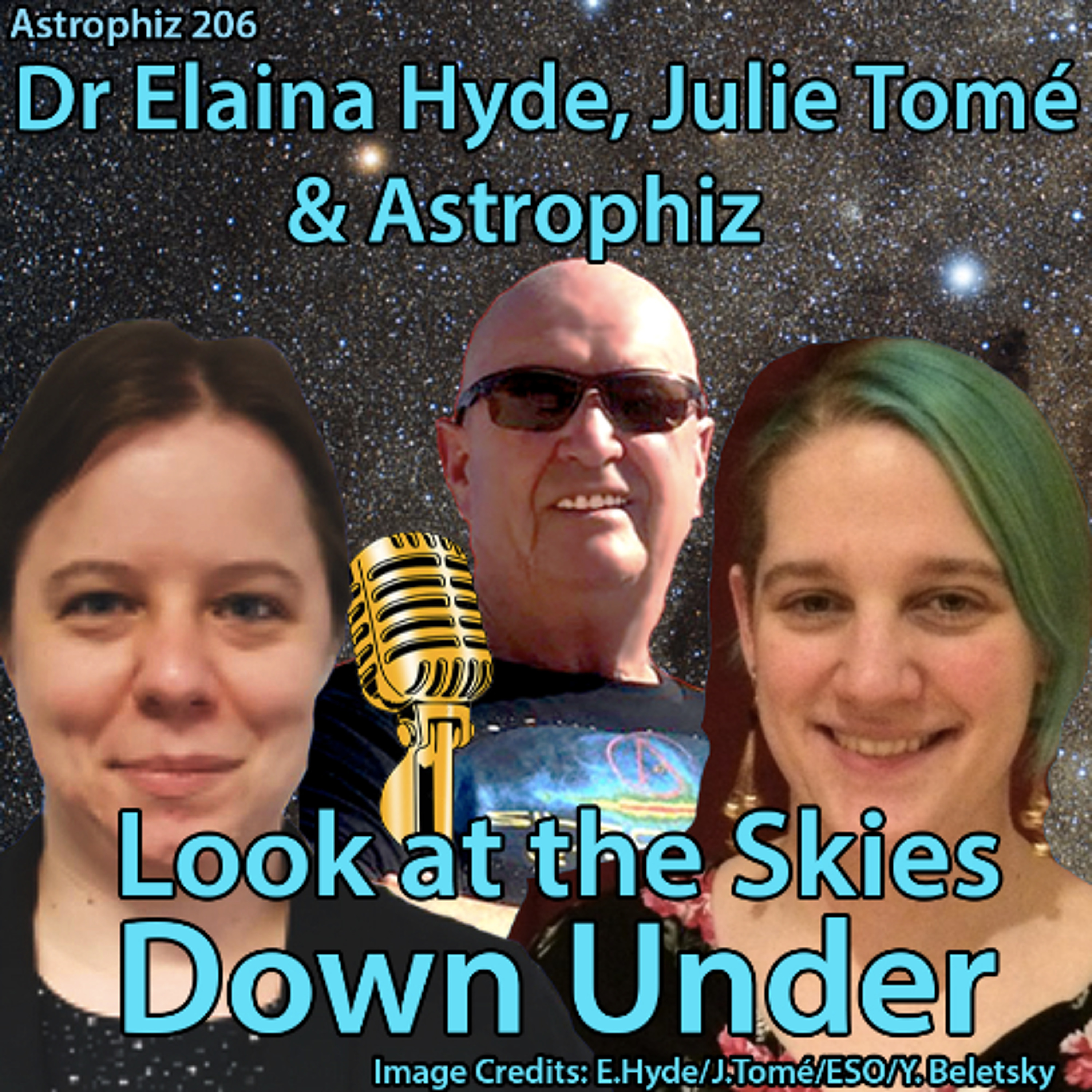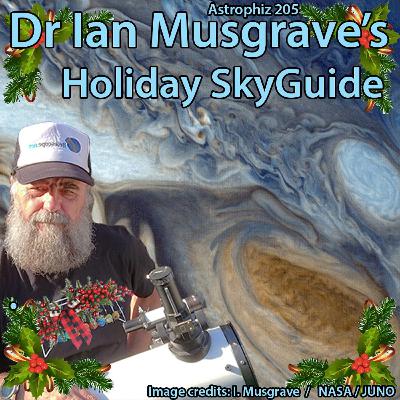Astrophiz 213: Dr Ian Musgrave's MaySkyGuide
Update: 2025-04-30
Description
May Moon Phases:
May 4 ~1st Quarter
May 11 ~ Moon at Apogee
May 13 ~ Full Moon
May 20 ~ Last Quarter Great for star gazing
May 26 ~ Moon at Perigee
May 27 ~ New Moon Great for star gazing
What’s Up in May?
Planets:
Evening Skies
Jupiter is difficult to see this month
Mars is visible, and nice to see just an hour after sunset
Uranus will return in a couple of months
Most of the planetary action is in the morning sky, Mercury Saturn and Venus are the standouts, but Mercury is lost in the twilight by mid month, returning to evening skies in June.
May 2 ~ Asteroid Vesta (almost a dwarf planet) is at opposition (closest to earth) May 8 ~ Eta Aquariids Meteor Shower should be pretty good this year (debris from Halley’s Comet) Great meteor spotting tips in the audio
Will TCrB go Nova this month? Keep watching
Ian recommends VESTA watching with naked eye under dark skies, in Binocs & ’scopes in the ‘Burbs. See his Astroblog, the Astrophiz FB page or Southern Skywatch for photos and easy finder charts
Ian’s Tangent: The Clouds of Mars.
Ian tells us how earth's clouds were named, and about the clouds on other planets
Websites to visit:
* https://cloudatlas.wmo-DOT-int/en/home.html
* https://europlanet-society-DOT-org/cloud-atlas-of-mars-showcases-array-of-atmospheric-phenomena/
( * copy & paste, then replace the DOT with an actual dot)
Ian’s Astrophotography Challenge: Capture asteroid VESTA on your phone or camera. Great tips in the audio
_______________________________
Next Up on Astrophiz:
In two weeks were zooming over 14 timezones to speak with Dr Anya Nugent who is an enthusiastically awesome astrophysicist who does exciting research into some of the most powerful phenomena in our universe. You’ll love her stories about how she uses some of the world's most powerful optical and near-infrared observatories to hunt down the host galaxies of supernovae, kilonovae, and gamma-ray bursts to understand their unique origins … see you in two weeks
May 4 ~1st Quarter
May 11 ~ Moon at Apogee
May 13 ~ Full Moon
May 20 ~ Last Quarter Great for star gazing
May 26 ~ Moon at Perigee
May 27 ~ New Moon Great for star gazing
What’s Up in May?
Planets:
Evening Skies
Jupiter is difficult to see this month
Mars is visible, and nice to see just an hour after sunset
Uranus will return in a couple of months
Most of the planetary action is in the morning sky, Mercury Saturn and Venus are the standouts, but Mercury is lost in the twilight by mid month, returning to evening skies in June.
May 2 ~ Asteroid Vesta (almost a dwarf planet) is at opposition (closest to earth) May 8 ~ Eta Aquariids Meteor Shower should be pretty good this year (debris from Halley’s Comet) Great meteor spotting tips in the audio
Will TCrB go Nova this month? Keep watching
Ian recommends VESTA watching with naked eye under dark skies, in Binocs & ’scopes in the ‘Burbs. See his Astroblog, the Astrophiz FB page or Southern Skywatch for photos and easy finder charts
Ian’s Tangent: The Clouds of Mars.
Ian tells us how earth's clouds were named, and about the clouds on other planets
Websites to visit:
* https://cloudatlas.wmo-DOT-int/en/home.html
* https://europlanet-society-DOT-org/cloud-atlas-of-mars-showcases-array-of-atmospheric-phenomena/
( * copy & paste, then replace the DOT with an actual dot)
Ian’s Astrophotography Challenge: Capture asteroid VESTA on your phone or camera. Great tips in the audio
_______________________________
Next Up on Astrophiz:
In two weeks were zooming over 14 timezones to speak with Dr Anya Nugent who is an enthusiastically awesome astrophysicist who does exciting research into some of the most powerful phenomena in our universe. You’ll love her stories about how she uses some of the world's most powerful optical and near-infrared observatories to hunt down the host galaxies of supernovae, kilonovae, and gamma-ray bursts to understand their unique origins … see you in two weeks
Comments
In Channel

